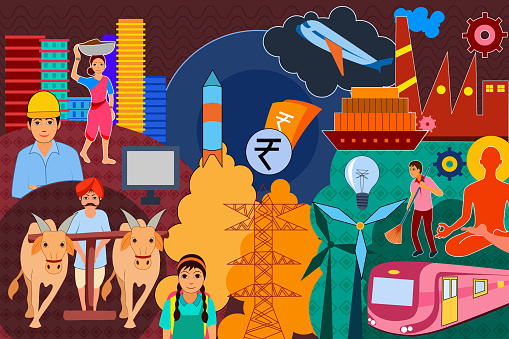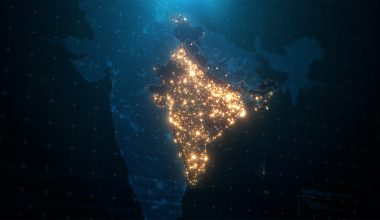Prime Minister Narendra Modi has been espousing his dream of Viksit Bharat by 2047 in many of his speeches in recent times. This was the central theme of his Independence Day address on 15th August.
Is this goal achievable?
What are the challenges?
What should be the strategy to achieve this goal?
One commonly accepted indicator of developed nation status is per capita income. The World Bank divides countries into four groups based on per capita income: low income, lower-middle income, upper-middle income and high income. Countries with per capita income above $14005 are regarded high income countries. India with a per capita income of $2484 in 2023 is currently regarded as lower-middle income country. To reach developed country status by 2047 we will have to grow our per capita income six times. This is a daunting task.
Third largest economy by 2027
India was the tenth largest economy in the world ten years ago. Currently we are the fifth largest with GDP close to $4 trillion. Since the third and fourth largest economies – Japan and Germany – are growing very slowly, it is a foregone conclusion that India will overtake them and become the third largest economy soon. During the last three years, India has been the fastest growing large economy in the world with average annual GDP growth rate above 7 percent and is all set to retain this status in FY25, too. The IMF has forecasted that India would become the third largest economy by 2027. There are many reports projecting Indian GDP at around $8 trillion in 2032.
$55 trillion economy by 2047?
India’s former Chief Economic Adviser Krishnamurthy Subramanian, currently Executive Director at IMF, has written an interesting book ‘India@100: Envisioning an Economic Powerhouse’, in which he has projected India’s GDP at $55 trillion by 2047. GDP multiplying 14 times in 23 years might appear a herculean task but is achievable, according to Dr Subramanian. He projects a real GDP growth of 8 percent and an average inflation rate of 5 percent implying nominal GDP growth rate of 13 percent. Assuming currency depreciation of only 1 percent, assisted by lower inflation, Dr Subramanian projects a nominal GDP growth in dollar at 12 percent. Now, if we apply the ‘Rule of 72’ which explains the number of years needed to double investment, India’s GDP can double every 6 years (72/12 = 6). This means 4 doublings are possible in the next 24 years taking the GDP to $64 by 2048. This is an extreme bull case scenario. There can be many headwinds that might impact the long-term growth trajectory. Geopolitical issues, climate change and debt overhangs might impact growth. But even if we fall short of the projections, impressive growth in GDP is on the cards.
The challenge of slowing growth
A recent study by the World Bank has highlighted the challenges likely to be faced by emerging economies. According to the World Bank, 108 nations, including major economies like China, India, Brazil, South Africa and Vietnam with per capita income ranging between $1136 to $13845 are striving to attain middle-income status in the next two or three decades. These countries constitute 40 percent of global economic activity. A serious issue highlighted by the World Bank is that in most of these countries, economic growth trajectory is not accelerating but slowing as income levels rise.
The middle-income trap
In development economics there is a term called middle-income trap. This refers to the inability of middle-income countries to transition to high-income countries. Comparative cost advantages in labor-intensive manufacturing and services will enable countries to reach middle-income status. But rising income/wages will eventually remove this advantage. So, a stage will be reached where a country can’t compete in labor-intensive economic activity due to rising wages and can’t compete in capital-intensive economic activity due to low productivity. Countries getting caught in this trap are called the middle-income trap.
Very few countries have broken the middle-income trap and emerged as developed high-income countries. Chile, South Korea and Poland are success stories of countries that have brokenout and emerged as developed ones.
The ‘3i’ strategy
The World Bank study has suggested a ‘3i’ strategy based on Investment, Infusion and Innovation to break out of the middle-income trap. The essential ingredients of this strategy are the following: Promoting private investment in a big way, developing a growth model sensitive to climate change, bridging the employment-skilling gap and integrating deeply into global supply chains.
India has the potential to breakout of the middle-income trap. Our political stability, demographic advantage, entrepreneurial talent, leadership in digital infrastructure and a highly diversified industrial and services economy place us in a vantage position to move up the income levels. But we need bold reforms to realize the potential. Reforms to improve the ease of doing business, judicial reforms to expedite dispute settlement, reforms in labor and land acquisition are the need of the times.







